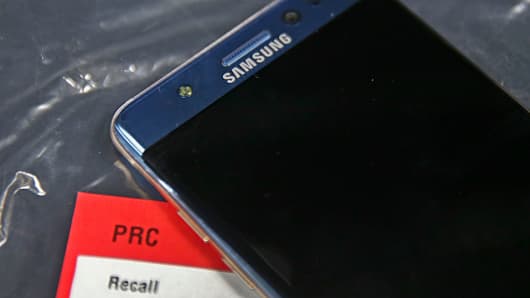Samsung’s Galaxy Note 7 phones and Tesla Cars caught fire because of the ‘aggressive’ battery design: Report
CNBC.com
Samsung was too “aggressive” in the design of its now-recalled fire-prone Galaxy Note 7 devices, particularly when it came to installing its battery, a new report claims.
The South Korean electronics giant was forced to recall and stop production of the Note 7 phones after reports of them exploding and setting alight. Samsung is yet to identify a reason for the issue publicly.
But one manufacturing technology company called Instrumental performed a teardown of the handset and thinks it has come up with the cause of the phablet’s problems.
The battery in the Note 7 is made up of a positive layer made of lithium cobalt oxide, a negative layer made of graphite, and a layer to separate those two materials. The layer in the middle allows energy to flow between the positive and negative layers. But if those layers touch, it would cause the battery to heat and that could lead to an explosion, according to Instrumental.
Adding pressure on the battery in this instant – such as sitting on phone – could be enough to squeeze the thin separating layer which makes the positive and negative sides of the cell touch, Instrumental said.
Samsung declined to comment on the report when contacted by CNBC.
Instrumental notes that battery testing takes a “notoriously long time (as long as a year for certain tests)” and thousands of batteries need to be tested. The company says that it’s possible Samsung went through many versions of the battery and the latest models “weren’t tested with the same rigor as the first samples”.
Samsung could have solved the problem by using the smaller battery, according to the report, but this would have put it at a disadvantage to rival Apple.
“A smaller battery using standard manufacturing parameters would have solved the explosion issue and the swell issue. But, a smaller battery would have reduced the system’s battery life below the level of its predecessor, the Note 5, as well as its biggest competitor, the iPhone 7 Plus. Either way, it’s now clear to us that there was no competitive salvageable design,” Instrumental noted.
Clarification: This article has been updated since first published following clarification from Instrumental.








